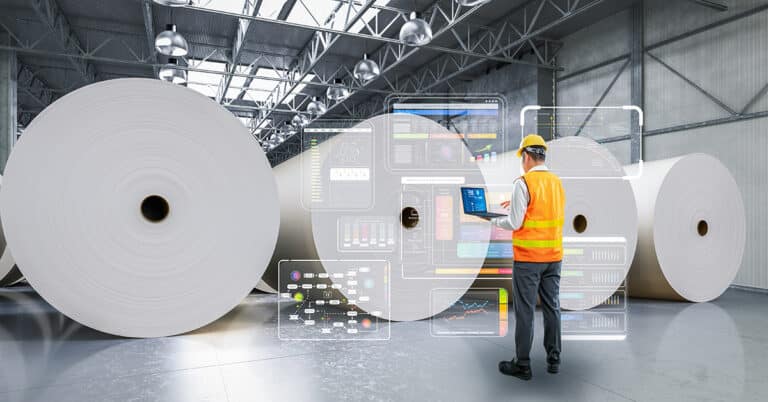Timing is everything, especially when it comes to keeping your facility’s equipment in good working order. Performing the right maintenance work at the proper time is critical if you want to avoid unexpected shutdowns and get the highest levels of efficiency from your machinery. Most industrial machines are built to precise tolerances and include sophisticated technology, meaning there’s a lot that can go wrong if neglected for too long. This is why developing a clear-cut equipment maintenance schedule for technicians to follow is so important. But what is maintenance scheduling, and how can industrial facilities go about doing it in the most effective way? Read on for the answers as well as some tips for planning scheduled maintenance that will ensure your machinery will always be in prime condition.
Types of maintenance scheduling
There are several different approaches to maintenance planning and scheduling that an industrial facility can put to use. Each one has its own advantages and disadvantages, meaning they need to be employed in the right scenario to be at their most effective. The main types of maintenance scheduling are:
- Preventive/planned: These maintenance tasks are performed at periodic intervals or when certain conditions occur. The goal is to discover and resolve smaller issues before they have an opportunity to develop into something worse that might need costly repairs.
- Predictive/condition-based: This approach involves scheduling maintenance tasks based on real-time machine health monitoring data obtained by sensors. For example, preventive maintenance scheduling could mean replacing a drive belt if vibrations within the equipment reach unacceptable levels based on the machine’s tolerances.
- On-demand/reactive: In this model, technicians address breakdowns or unexpected issues as they emerge. This is useful for taking care of problems that arise despite preventive maintenance but is inefficient as the sole basis for a maintenance strategy.
- Mixed strategy: Many companies adopt a hybrid approach, combining regularly scheduled maintenance tasks with the flexibility to address needs identified through sensor readings.
Key components of an effective maintenance schedule
Developing a machine maintenance schedule is one of the most important elements of maintenance management, and doing so requires a deep understanding of your facility’s needs. Effective maintenance planning means a schedule should contain:
- Assets: All equipment requiring maintenance should be accounted for, including model numbers and location within the facility.
- Tasks: Every task needed to keep equipment in good condition should be noted for each asset.
- Intervals: The timeframe for each maintenance task must be included in the schedule.
- Priority: Understanding which jobs are the most important to the overall productivity of operations is necessary for scheduling.
- Personnel: Equally crucial as determining what needs to be done is identifying who will be responsible for completing it.
- Inventory: Without a clear breakdown of which spare parts are in your inventory, some tasks may be held up while supply chain tries to keep up with the activity.
Challenges in maintenance scheduling and solutions
Perhaps the biggest challenge many industrial facilities face when it comes to a scheduled maintenance program is simply keeping everything straight. With numerous tasks scheduled at different intervals, it can be overwhelming, leading to some jobs being overlooked. This is why so many operations choose to use a computerized maintenance management system (CMMS) to keep track of activities. These maintenance scheduling software platforms can plan tasks automatically, generating easy-to-see reports that help technicians prioritize their efforts in the most effective and efficient way.
A CMMS also provides tools for work order management to track each maintenance activity as well as asset histories. The schedules are updated in real-time, with color-coding to ensure everyone knows at a glance what tasks are the highest priorities, when they need to be completed and by whom. These systems can send push notifications to technicians’ smartphones and other devices to keep them updated about their preventive maintenance schedule.
Best practices in maintenance scheduling
Proper maintenance scheduling is critical for the ongoing success of any industrial operation, and there are a few core tenets that should be kept in mind when developing a schedule:
- Prioritize reliability: Routine maintenance tasks for non-essential equipment or those aimed at preventing less likely failures should be lower in priority.
- Utilize data: Today’s industrial equipment can be outfitted with advanced sensor technology that provides a healthy stream of information. Maintenance teams should always base their decisions on key performance indicators to ensure they’re concentrating their efforts in the most appropriate places.
- Maintain healthy stock levels: Spare parts and other critical components need to be on-hand when they’re required. Otherwise, a maintenance strategy is nothing more than an idea. This is why inventory levels need to be tracked and made part of the scheduling process.
- Get feedback: Technicians should provide detailed reports about how well the current system is working. This is crucial for continuous improvement efforts to ensure everything is being handled properly.
Strong partnerships with experienced maintenance providers also ensure your facility has the right schedule in place to suit all your needs. Working with a maintenance coordinator from ATS means you’ll be working with the most experienced maintenance planners in the industry. We provide you with everything you need to feel confident that your plan contains all the elements you need. To learn more, reach out and talk to one of our representatives today.






